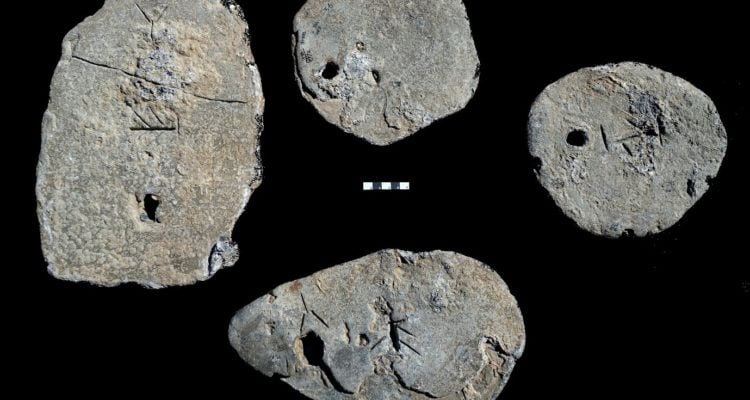A study by Israeli professors at the Hebrew University analyzed the cargo found near the port of Caesarea.
By World Israel News Staff
The Late Bronze Age of the Mediterranean Sea basin was an era characterized by complex supra-regional relations and diplomacy, with trade and exchange of gifts being common practices.
Now, lead ingots and stone anchors found among shipwrecked cargo off the coast of Israel reveal previously unknown trading links among distant countries, shedding light on commercial and diplomatic life in the area from 3,200 years ago.
Prof. Naama Yahalom-Mack of the Hebrew University of Jerusalem Institute of Archaeology collaborated with Professor Yigal Erel at HU’s Institute of Earth Sciences to determine the source of four lead ingots among a shipwreck’s cargo near the port of Caesarea.
By studying the source of the lead and comparing their findings to other archaeological artifacts from across the Mediterranean Sea, the researchers were able to prove that the ingots were made of lead mined in the central Mediterranean island of Sardinia.
Furthermore, the ingots were incised with Cypro-Minoan markings which, though undeciphered to this day, are known to have been in use in Cyprus during the Late Bronze Age. Accordingly, the researchers concluded that there were vast commercial ties between the two populations with the purpose of transporting raw material.
According to Yahalom-Mack, this study teaches us about the active role that the Cypriots had in trade during the same era and how far they were willing to go—given that Cyprus and Sardinia are located more than 2,500 km (1550 miles) from one another– in order to import lead, used to create luxury goods at the end of the era.
“We think that along with lead, they also imported tin — a sought-after metal in Cyprus and the surrounding area for making bronze. These three metals — copper, lead, and tin — were sold to port cities along the coastlines, including the shores of today’s Israel,” she said.
The findings were published in the February edition of the Journal of Archaeological Science: Reports and was conducted in collaboration with Prof. Assaf Yasur-Landau and Dr. Ehud Galili of the University of Haifa’s Institute for Maritime Studies.





